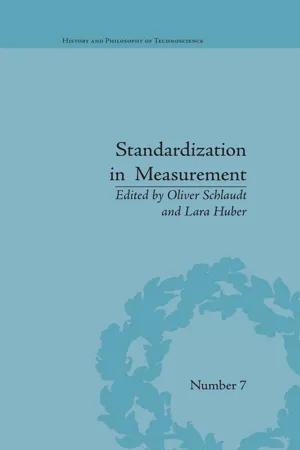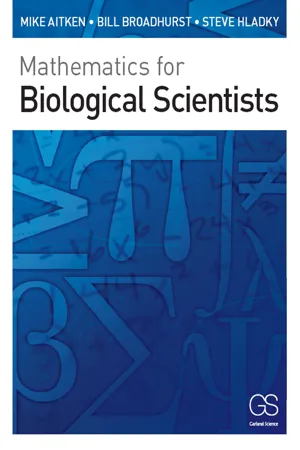Physics
Equations in Physics
Equations in physics are mathematical expressions that describe the relationships between physical quantities. They are used to represent fundamental principles and laws in physics, such as Newton's laws of motion, the laws of thermodynamics, and Maxwell's equations for electromagnetism. By solving these equations, physicists can make predictions and understand the behavior of the natural world.
Written by Perlego with AI-assistance
Related key terms
4 Key excerpts on "Equations in Physics"
- Iftikhar B. Abbasov(Author)
- 2018(Publication Date)
- Wiley-Scrivener(Publisher)
The subject of mathematical physics is the mathematical theory of physical phenomena. The wide distribution of mathematical physics is connected to the commonality of mathematical models based on fundamental laws of nature: the laws of mass, energy, charge conservation, kinetic momentum. This results in the same mathematical models describing the physical phenomena of different natures.Mathematical physics usually examines processes in a certain spatial area filled with a continuous material environment called the solid environment. Values that describe the state of the environment and the physical processes that occur in it depend on the spatial coordinates and time. In general, mathematical physics models describe the behavior of the system at three levels: the interaction of the system as a whole with the external environment; the interaction between the system’s basic volumes and the properties of a single, basic system volume.The interaction of the system with the external environment is the wording of the boundary conditions, i.e., the conditions at the border of the task area, which include in general the boundary and initial conditions. The second level describes the interaction of elementary volumes based on laws for the preservation of physical substances and their transfer in space. The third level corresponds to the establishment of the state equations of the environment, i.e., the creation of a mathematical model of the basic environment behavior.The equations of mathematical physics emerged from the consideration of such essential physical tasks as the distribution of sound in gases, waves in liquids, heat in physical bodies. The phenomena of nuclear reaction, gravity, electromagnetic effects, the origin and evolution of the universe are being actively explored now. Mathematical models of these different physical phenomena lead to equations with private derivatives.An equation with a private derivative is an equation that includes an unknown function that depends on several variables and its private derivatives. Dependence on many variables in an unknown function makes it much harder to solve equations with private derivatives. Very few of these equations are explicitly solved.- eBook - ePub
Standardization in Measurement
Philosophical, Historical and Sociological Issues
- Oliver Schlaudt, Lara Huber, Oliver Schlaudt, Lara Huber(Authors)
- 2015(Publication Date)
- Routledge(Publisher)
4 The Double Interpretation of the Equations of Physics and the Quest for Common Meanings
Nadine de CourtenayDOI: 10.4324/9781315653648-7The use of genuine mathematical equations to express physical relations is a surprisingly recent phenomenon. Although expressions that look very much like the familiar equations of classical physics we have been taught in school were used in eighteenth-century rational mechanics, closer inspection reveals that these expressions are really ‘simple proportionalit(ies) indicated in an abbreviated manner’.1 The rationale for our current use of textbook equations can be traced to the 1950s, but it is unlikely that many of the equations’ contemporary users will have considered the scaffolding that enables us to handle these equations as we do. In the following, I will try to give a sense of how physical relationships have come to be represented in mathematical form, and show that the reason why we can securely embark on our current manipulations, even though we largely ignore their theoretical underpinning, is because these manipulations are supported by a hidden structure that permeates the formalism we have learned to use.When we deal with textbook equations we casually move between two distinct interpretations of the mathematical expressions we are handling. This ‘double interpretation’ of the equations of physics was first introduced by Maxwell in an article of the Encyclopedia Britannica - eBook - ePub
- Mike Aitken, Bill Broadhurst, Stephen Hladky(Authors)
- 2009(Publication Date)
- Garland Science(Publisher)
CHAPTER 1 Quantities and UnitsFigure 1.1The authors, Mike, Steve, and Bill, holding a protein sample destined for the 500 MHz NMR spectrometer in the background. Image courtesy of Mike Aitken, Bill Broadhurst, and Steve Hladky.As scientists, we need to make quantitative statements about the physical quantities measured in our experiments. Algebra provides the language and grammar to make these statements. In this language the sentences are equations or inequalities whereas the words are symbols. A symbol may stand for a physical quantity or a number; for an operation such as addition or multiplication; or for a relationship such as ‘is equal to’ or ‘is greater than’. Often we use letters such as x, t, m, or A to stand for physical quantities such as distance, time, mass, or area. Symbols can also be special characters such as + for addition, or a combination of letters such as ‘sin’ for the sine function introduced in Chapter 4 .A physical quantity is a combination of a numerical value and a unit, for example a length of 1 m, a time of 2 s, or a mass of 70 kg, where the ‘m’ stands for meter, ‘s’ for second, and ‘kg’ for kilogram. Both are needed; if we change the unit the number changes accordingly. Many of the laws of science are expressed as simple equations relating physical quantities. A familiar example is F = ma where F, m, and a stand for force, mass, and acceleration. There are various systems for choosing units and conventions for how physical quantities are to be described. In this book we use the Système Internationale (SI) system of units, which has become standard for scientists and engineers throughout the world.1.1 Symbols, operations, relations, and the basic language of mathematicsIn the language of mathematics, the words are symbols like x, t, m, +, ×, ÷, =, >. Symbols can stand for numbers or for physical quantities; they can indicate operations or they can state relationships like ‘is equal to’ or ‘is greater than’. You first started using many of these symbols back in primary school where you learned what + and = mean. Even then you also used symbols to stand for unknown numbers in exercises like that shown in Figure 1.2 - eBook - ePub
The Reform of the International System of Units (SI)
Philosophical, Historical and Sociological Issues
- Nadine de Courtenay, Olivier Darrigol, Oliver Schlaudt(Authors)
- 2019(Publication Date)
- Routledge(Publisher)
concept of quantity is important because of the role that quantities have in the quantity equations expressing the fundamental laws of science.4.2 Quantity equations and dimensional equations
On Lodge’s approach (as with the approach I took in Sterrett (2009)), quantity equations express the fundamental laws of physics as relations between quantities. Quantity equations must be dimensionally homogeneous, but the constraint of dimensional homogeneity on an equation is like a grammatical constraint on a statement; just as there is much more to a statement than its grammatical structure, so there is much more to an equation of physics than homogeneity of dimensions. Another way to put this is to point out that the dimensional equation one would write to show that the quantity equation is dimensionally homogenous is not necessarily as informative as the quantity equation itself is. For example, consider the equation s = a t 2 , where s is a distance, a is an acceleration and t is a time, considered as a quantity equation. The dimensional equation is [L] = [L] [T]− 2 [T]2 or [L] = [L].Where do dimensional equations fit in the logical scheme of developing a system of units? They are not the beginning point, for dimensional equations are relative to the quantity equations expressing the fundamental laws of the science one is concerned with. (We saw that, even in Fourier’s presentation of how to determine the exponents of dimensions of the units for various quantities, a necessary prior step was identifying the three quantities with respect to which the exponents of dimension were to be determined.) Dimensional equations are also relative to the selection of which of the quantities in those quantity equations is designated for use as a base dimension
Index pages curate the most relevant extracts from our library of academic textbooks. They’ve been created using an in-house natural language model (NLM), each adding context and meaning to key research topics.



